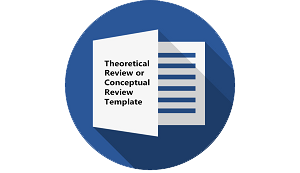WHAT WORDS SHOULD WE TEACH? EXPLORATION INTO VOCABULARY PROFILER
DOI:
https://doi.org/10.30957/ijoltl.v2i3.386Keywords:
vocabulary, word frequency, vocabulary profiler, negative vocabulary.Abstract
 Students learning English as a foreign language are often frustrated when they have to cope with new words. The teacher’s task in teaching vocabulary seems equal to the student’s learning burden when it comes to decide which words to introduce and how to select words that the students actually need to learn. This article proposes that Vocabulary Profiler (www.lextutor.ca) can be utilized to profile the vocabulary in a textbook to produce word frequency . An English textbook with 21,577 words was selected for analysis with the Vocabulary Profiler. The output shows high and low frequency word groups that can be used as bases for vocabulary selection in teaching. In addition, the output provides information about negative vocabulary and token recycling index, an indicator of text comprehensibility. Although this article sampled a textbook for use in Indonesian contexts, the ideas might be of interest to EFL teachers in other countries.Â
Â
Downloads
References
Adolphs, S. and Schmitt, N. (2004). Vocabulary coverage according to spoken discourse context. In P. Bogaards and B. Laufer (Eds.), Vocabulary in a Second Language (pp.39-52).Amsterdam: John Benjamins.
Buku Sekolah Elektronik. http://bse.kemdikbud.go.id.
Coxhead, A. (2011). The academic word list 10 years on: research and teaching implications. TESOL Quarterly 45(2), 355-362.
Douglas, S. R. (2013). The lexical breadth of undergraduate novice level writing competency. The Canadian Journal of Applied Linguistics, 16 (1), 152-170.
Godwin-Jones, R. (2010). Emerging technologies, from memory places to spacing algorithms: approaches to second language vocabulary learning. Language Learning and Technology, 14, 4-11.
Hirsch, E.D. (2003). Reading comprehension requires knowledge of words and the world. American Educator, Spring. American Federation of Teachers.
Horst, M. (2013).Mainstreaming second language vocabulary acquisition. The Canadian Journal of Applied Linguistics, 16 (1), 171-188.
Laufer, B., and Ravenhorst-Kalovski, G. C. (2010). Lexical threshold revisited: lexical text coverage, learners’ vocabulary size and reading comprehension. Reading in a Foreign Language, 22, 15-30.
Nation, I. S. P. (1990). Teaching and learning vocabulary. Boston: Heinle & Heinle Publishers..
Nation, I. S. P. (2001).Learning vocabulary in another language. Cambridge: Cambridge University Press.
New General Service List. Http://www.newgeneralservicelist.org.
Read, J. (2004). Research in teaching vocabulary. Annual Review of Applied Linguistics, 24, 146-161.
Schmitt, N. (2000) Vocabulary in language teaching. Cambridge: Cambridge University Press.
Schmitt, N. (2004). Vocabulary in language teaching. Cambridge: Cambridge University Press.
Schmitt, N., Jiang, X. and Grabe, W. (2011).The percentage of words known in a text and reading comprehension. Modern Language Journal, 95, 26-43.
Sedita, J. (2005). Effective vocabulary instruction. Insights on Learning Disability, 2(1), 33-45.
Stæhr, L. S. (2008). Vocabulary size and the skills of listening, reading and writing. Language Learning Journal, 36, 139-152.
Vocabulary Profiler. www.lextutor.ac/vp.
Zheng, Y. (2012). Exploring long-term productive vocabulary development in an EFL context: the role of motivation. System, 40, 104-119.
Zhang, B. and Li, C. (2011).Classification of L2 vocabulary learning strategies: evidence form exploratory and confirmatory factor analysis. RELC Journal, 42, 141-154.
Downloads
Published
How to Cite
Issue
Section
License
Authors who publish with this journal agree to the following terms:
- Authors retain copyright and grant the journal right of first publication with the work simultaneously licensed under a Creative Commons Attribution-ShareAlike 4.0 International License that allows others to share the work with an acknowledgement of the work's authorship and initial publication in this journal.
- Authors are able to enter into separate, additional contractual arrangements for the non-exclusive distribution of the journal's published version of the work (e.g., post it to an institutional repository or publish it in a book), with an acknowledgement of its initial publication in this journal.
- Authors are permitted and encouraged to post their work online (e.g., in institutional repositories or on their website) prior to and during the submission process, as it can lead to productive exchanges, as well as earlier and greater citation of published work (See The Effect of Open Access).












